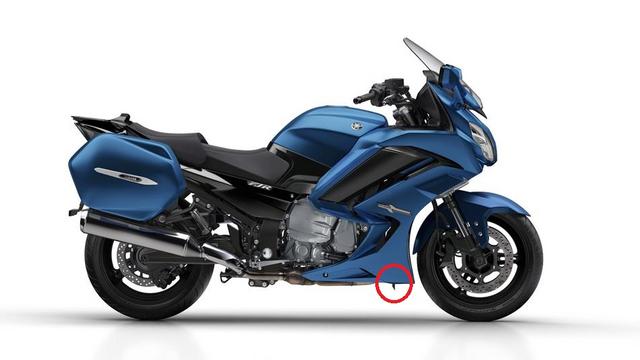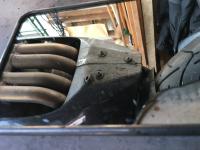mcatrophy
Privileged to ride a 2018 FJR1300AS
Went to sister-in-law's for lunch today (very nice, but not the point).
I left the bike in front of the house on the drive, and in the sunshine (we've been having some unusually very hot weather for the UK), and joined the family at the back of the house in the shade.
Some five hours later, I get myself ready to leave, sit on the bike, start it, and was a little surprised to see the ambient temperature display showing 40C (104F), and the LCD screen was just beginning to blacken. But it had been sitting in the sun, so understandable.
Paddled the bike back to the road, selected first, started to open the throttle. As the clutch started to engage (this is a YCC-S bike), the engine misfired a bit, and as the clutch fully engaged, the engine stalled. Nearly dropped it because the bike was leaned over a bit. Stalling almost never, ever, happens on a YCC-S bike.
Pressed the starter, engine missed as it fired, I gave it a bit of throttle which got it running, then repeated first gear, throttle up, misfire and stall (only this time the bike was pointing straight ahead, I'm not completely stupid).
Thoughts started going through my mind, feels like the engine is lacking fuel, late Saturday afternoon, miles from home ...
Anyway, after the 4th or 5th attempt, it didn't stall, I could start to accelerate into 2nd gear, and it began to run normally.
So over the course of my trip back home I think I worked out what had happened. The bike had soaked up to a high temperature. The engine management computer probably thought the engine was already hot, so it ignored the cold start cycle, meaning that the engine wouldn't run properly. In retrospect, I remembered that when I started it, it didn't run at its cold idle speed, just at normal warm speed.
Not heard of an FJR doing this before, so thought I'd post it up.
Hoping it starts normally on the next cold start ...
I left the bike in front of the house on the drive, and in the sunshine (we've been having some unusually very hot weather for the UK), and joined the family at the back of the house in the shade.
Some five hours later, I get myself ready to leave, sit on the bike, start it, and was a little surprised to see the ambient temperature display showing 40C (104F), and the LCD screen was just beginning to blacken. But it had been sitting in the sun, so understandable.
Paddled the bike back to the road, selected first, started to open the throttle. As the clutch started to engage (this is a YCC-S bike), the engine misfired a bit, and as the clutch fully engaged, the engine stalled. Nearly dropped it because the bike was leaned over a bit. Stalling almost never, ever, happens on a YCC-S bike.
Pressed the starter, engine missed as it fired, I gave it a bit of throttle which got it running, then repeated first gear, throttle up, misfire and stall (only this time the bike was pointing straight ahead, I'm not completely stupid).
Thoughts started going through my mind, feels like the engine is lacking fuel, late Saturday afternoon, miles from home ...
Anyway, after the 4th or 5th attempt, it didn't stall, I could start to accelerate into 2nd gear, and it began to run normally.
So over the course of my trip back home I think I worked out what had happened. The bike had soaked up to a high temperature. The engine management computer probably thought the engine was already hot, so it ignored the cold start cycle, meaning that the engine wouldn't run properly. In retrospect, I remembered that when I started it, it didn't run at its cold idle speed, just at normal warm speed.
Not heard of an FJR doing this before, so thought I'd post it up.
Hoping it starts normally on the next cold start ...


































































